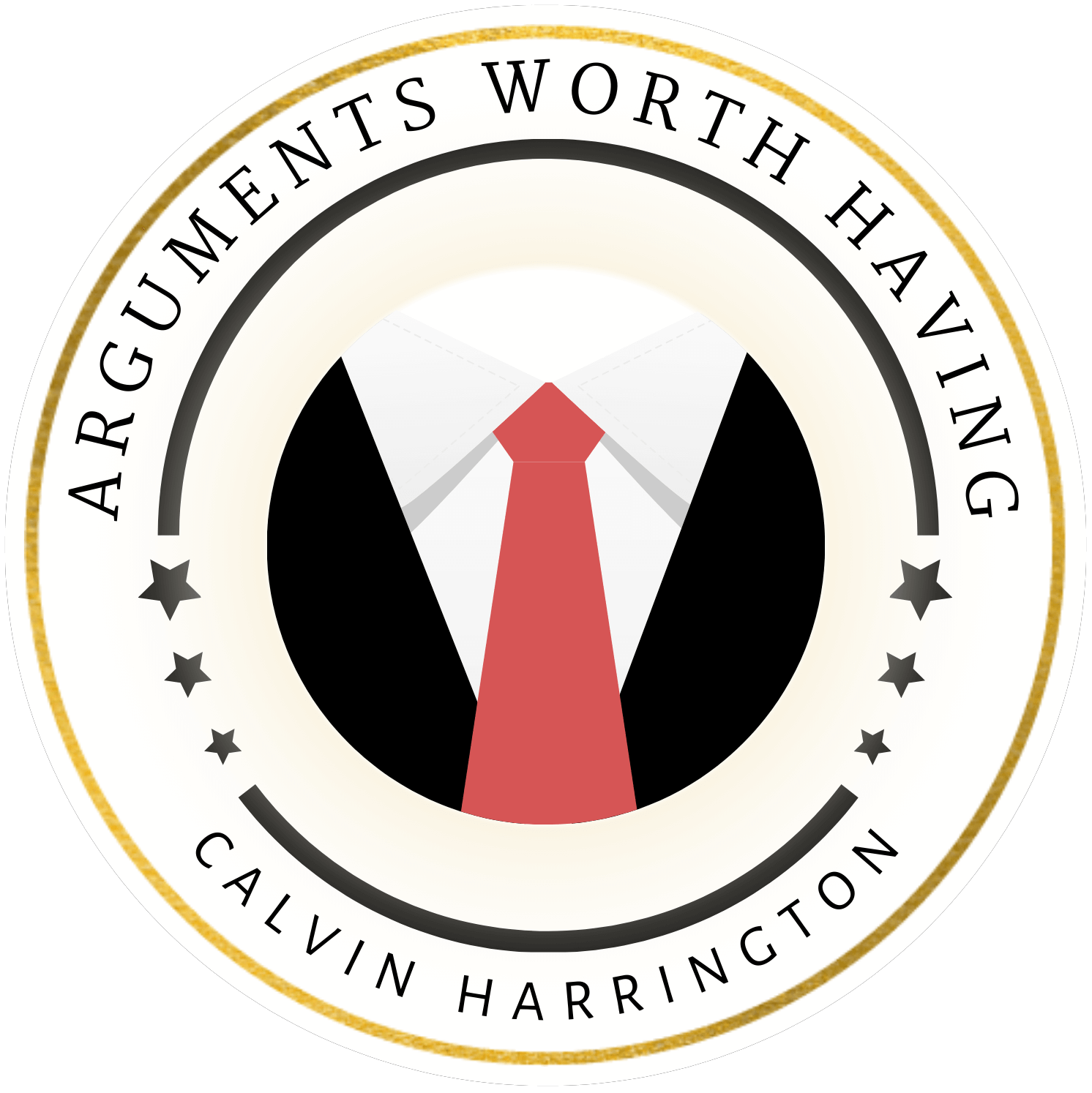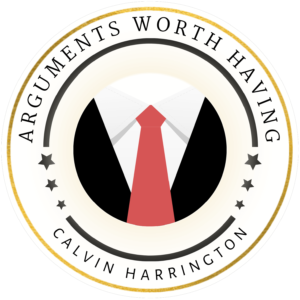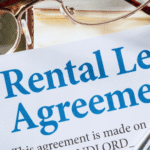Effective property management goes far beyond basic oversight. It encompasses a comprehensive range of responsibilities designed to protect the value of an investment and ensure a positive living experience for tenants. This includes detailed tenant screening and thoughtful placement to maintain a reliable and respectful community, proactive maintenance to prevent issues before they become costly problems, and transparent financial reporting that keeps owners fully informed.
These services apply across a variety of property types, whether single-family homes, multi-family buildings, or condominium communities, ensuring each asset is managed with consistency, care, and long-term stability in mind. For investors hoping to optimize their real estate portfolios without managing day-to-day operations, partnering with a dedicated firm like AspirePeak Properties can offer invaluable support. Professional oversight ensures properties remain well-maintained, vacancies stay low, and regulatory requirements are consistently met, allowing investors to concentrate on long-term strategic growth.
Real estate asset management software has also become an essential tool for property managers and investors alike. This type of software streamlines processes improves efficiency, and provides invaluable insights into portfolio performance. As the real estate market continues to grow and evolve, leveraging technology to manage assets proves not only beneficial but necessary for success.
With features like tenant management, maintenance tracking, and financial reporting, this software allows users to oversee multiple properties from a single platform. It reduces manual workload and minimizes errors, saving time and resources. By adopting real estate asset management software, property stakeholders can focus more on strategic growth rather than routine tasks.
Understanding how to choose the right software is crucial for maximizing its benefits. Various options exist, each catering to different needs and budget levels. Exploring the capabilities, integrations, and user experiences of these tools can lead to better decision-making and enhance overall asset performance.
Understanding Real Estate Asset Management Software
Real estate asset management software plays a vital role in streamlining operations and enhancing decision-making in property management. This section clarifies its definition, purpose, and the various applications it supports in the real estate industry.
Definition and Purpose
Real estate asset management software is designed to assist property managers and investors in tracking, managing, and maximizing the value of real estate assets. It integrates various functions such as financial analysis, leasing, maintenance tracking, and tenant relationship management into one cohesive platform. Its primary purpose is to simplify workflows, improve decision-making, and provide valuable insights through data analytics. With features like automated reporting and performance monitoring, stakeholders can make informed decisions about property investments and operations, thus optimizing returns on investments.
Scope of Application
The application of real estate asset management software spans multiple sectors, including residential, commercial, and industrial properties. Each sector benefits from tailored features that address their specific needs. For commercial properties, it may cover lease management and space utilization analytics. In residential scenarios, it often includes tenant screening, rent collection, and maintenance requests. The software is also useful for real estate investment trusts (REITs), providing tools for portfolio management and performance tracking across diverse assets.
This technology supports various stakeholders, from property managers to investors, facilitating a comprehensive view of asset performance and market opportunities.
Key Features of Asset Management Software
Real estate asset management software encompasses a variety of features designed to streamline property management processes. These functionalities enhance efficiency, facilitate decision-making, and provide comprehensive oversight for real estate portfolios.
Portfolio Management
Portfolio management features allow users to oversee multiple properties effectively. This includes tools for tracking property performance, analyzing market trends, and benchmarking against industry standards. Users can categorize assets by type, location, or performance metrics. Dashboards provide a quick view of key indicators, allowing managers to identify underperforming properties. Integration with external data sources enhances analysis and decision-making capabilities, making it easier to respond to market changes. Additionally, in order to strengthen portfolio oversight and refine property-level decision-making, tools like those provided by platforms such as MyHotelMetrics (available via https://myhotelmetrics.com/) can also serve as valuable add-ons by offering location-specific data, market comparisons, and trend analysis for hospitality-focused assets.
Maintenance Tracking
A robust maintenance tracking system ensures properties are well-maintained and compliant with regulations. Users can schedule regular maintenance tasks, track service requests, and monitor the status of repairs. Automated alerts notify managers of upcoming maintenance needs or overdue tasks. This helps prevent small issues from escalating into costly repairs. Additionally, a centralized maintenance history is valuable for budgeting and forecasting future needs.
To bridge the gap between software-driven maintenance schedules and on-the-ground execution, many organisations partner with local facilities teams that specialise in responsive upkeep and regulatory compliance. Working with providers experienced in the area can streamline service coordination, reduce downtime and ensure documentation is kept audit-ready. For property managers operating in West Yorkshire, resources outlining available regional support—such as facilities management in Leeds—can help match software alerts to vetted contractors for HVAC, electrical, plumbing and lift maintenance. Integrating these local services into maintenance workflows improves both operational resilience and long-term cost forecasting.
Financial Management
Financial management tools are crucial for tracking income and expenses associated with each property. This includes rent collection, expense reporting, and budgeting functionalities. Real-time financial dashboards offer insights into cash flow, profitability, and financial performance against set goals. Integration with accounting software streamlines financial reporting and enhances accuracy in financial data. Robust auditing features maintain compliance and ensure transparency.
Reporting and Analytics
Reporting and analytics capabilities empower users to generate detailed reports on property performance, market conditions, and operational efficiency. Customizable report templates allow for the analysis of specific metrics relevant to the user’s needs. Visual representations, such as graphs and charts, facilitate easier interpretation of data. Predictive analytics can identify trends, helping managers make informed decisions regarding investments or operational changes.
Timely and accurate reporting supports strategic planning and enhances stakeholder communication.
Document Management
Document management features provide a centralized repository for important files, contracts, and communications. Users can store, retrieve, and share documents securely within the platform. Version control maintains the integrity of essential documents, ensuring that users access the most up-to-date information. Search functionalities simplify locating specific documents, enhancing operational efficiency. Additionally, integration with electronic signature tools streamlines the approval process for contracts and leases.
Benefits of Implementing Asset Management Software
Implementing real estate asset management software presents several clear advantages. These benefits include improved operational efficiency, enhanced decision-making abilities, and better communication among stakeholders.
Operational Efficiency
Real estate asset management software automates routine tasks, significantly reducing the time spent on manual processes. It streamlines property management by consolidating information such as maintenance requests, tenant communications, and leasing details into one platform. Automation of tasks like rent collection and reporting minimizes errors and ensures timely actions. This leads to increased productivity among staff who can focus on strategic tasks instead of administrative ones. Additionally, integrated tools facilitate real-time data access. Stakeholders can quickly analyze performance metrics and track property status, which ultimately boosts operational performance.
Improved Decision-Making
The software enhances decision-making through access to real-time data analytics. Stakeholders can evaluate key performance indicators (KPIs) such as occupancy rates, financial trends, and market conditions effectively.
By analyzing this data, property managers can identify opportunities for cost reduction and revenue enhancement. Detailed reporting features allow for deep dives into asset performance, supporting informed strategies for investment and development. Moreover, scenario modeling tools enable stakeholders to foresee the potential impact of decisions before implementation. This capability significantly reduces risks associated with investment choices.
Enhanced Communication
Effective communication is essential in real estate asset management, and software solutions facilitate this. Centralized platforms ensure all stakeholders—property managers, owners, and tenants—have access to relevant information. Built-in messaging features enable seamless communication regarding maintenance updates, lease negotiations, or tenant issues. This reduces misunderstandings and fosters a collaborative environment. Having a single point of reference for documents and reports minimizes the chances of misinformation. Transparency in operations helps build trust among all parties involved, leading to better working relationships.
Choosing the Right Software for Your Business
Selecting the appropriate real estate asset management software requires careful consideration of various factors. Key aspects include features, integration capabilities, scalability, and vendor support.
Assessing Features and Capabilities
Understanding the specific needs of a business is critical when evaluating software features. Key functionalities to consider include property management, financial reporting, and tenant management.
Property Management: The software should streamline processes such as leasing, maintenance requests, and tenant communications.
Financial Reporting: Look for tools that support budgeting, accounting, and performance metrics. These features enable efficient financial oversight and help in making informed decisions.
User Interface: A clean and intuitive interface enhances user experience. This facilitates easy navigation, resulting in better adoption across teams.
Integration with Existing Systems
The ability to integrate seamlessly with existing software systems is essential for a smooth transition. Businesses often use various tools, such as accounting software and CRM systems.
Compatibility: Ensure that the new software can connect with the current tools without data loss.
API Access: Check for APIs that allow custom integrations, which can enhance overall system efficiency and responsiveness.
Data Migration: Consider the vendor’s capabilities in transferring data from old systems to the new software. A reliable migration process minimizes downtime and preserves data integrity.
Scalability and Customization
As businesses grow, their software needs will evolve. Selecting scalable software can prevent future limitations.
Scalability: The chosen software should accommodate increasing property portfolios or additional user access without performance degradation.
Customization Options: Different businesses have varied requirements. Look for software that allows custom features or settings that align with specific needs.
User Permissions: Customizable user roles enhance security and ensure that staff have appropriate access levels.
Vendor Support and Training
Vendor support is a critical factor in the successful implementation of real estate asset management software.
Support Services: Evaluate what types of support are offered, such as live chat, phone assistance, or knowledge bases. Reliable support ensures issues can be resolved quickly.
Training Resources: Effective training programs help staff get the most out of the software. This can include webinars, tutorials, and comprehensive documentation.
Community and Feedback: A strong user community indicates a well-supported product. Check for forums or user feedback channels to gauge software reliability and vendor responsiveness.
Challenges and Considerations
Managing real estate assets involves several challenges that require careful attention. Key areas of concern include data security, user adoption rates, and the return on investment from implementing software solutions. Each aspect plays a critical role in the smooth operation of real estate asset management.
Data Security and Compliance
Data security is paramount for real estate asset management software. Sensitive information, including financial data and tenant records, must be protected from unauthorized access.
Key considerations include:
- Data Encryption: Ensures that data is unreadable without proper authorization.
- Access Controls: Limiting access to sensitive information based on user roles helps mitigate risks.
- Regulatory Compliance: Businesses must comply with regulations such as GDPR or CCPA. Non-compliance can lead to heavy fines and reputational damage.
Regular audits and security assessments can help identify vulnerabilities. Implementing robust security measures builds trust with clients and tenants alike.
User Adoption
User adoption is crucial for the effectiveness of real estate asset management software. If users do not embrace the system, the intended benefits may not be realized.
Factors influencing adoption include:
- Training Programs: Comprehensive training enhances user competency and confidence.
- User Experience: A user-friendly interface encourages frequent use and reduces frustration.
- Support Systems: Ongoing help desks and resources can assist users in resolving issues quickly.
Low adoption rates can lead to underutilization of the software, diminishing its potential value. Therefore, organizations must invest in strategies to promote and sustain user engagement.
Return on Investment
Evaluating the return on investment (ROI) is vital for choosing real estate asset management software. Organizations should assess how the software impacts efficiency, cost savings, and revenue growth.
Key metrics to consider:
- Increased Efficiency: Streamlined processes and reduced manual tasks can enhance productivity.
- Cost Savings: Identifying areas where operational costs are cut can lead to significant savings over time.
- Enhanced Decision-Making: Access to analytics and reporting improves strategic planning and investment decisions.
Calculating the ROI accurately requires ongoing measurement and adjustment. A clear understanding of financial metrics aids in justifying investment in software solutions.
Future Trends in Real Estate Asset Management
Emerging technologies are influencing the landscape of real estate asset management. Key trends include the integration of artificial intelligence, increased mobile accessibility, and a strong focus on sustainability.
Artificial Intelligence and Machine Learning
Artificial intelligence (AI) and machine learning (ML) are transforming asset management processes. These technologies allow for advanced data analysis, leading to better decision-making.
Key benefits include:
- Predictive Analytics: AI can forecast market trends and property values, helping managers make informed investments.
- Automated Processes: Routine tasks like tenant screening and lease management are increasingly automated, reducing workload and increasing efficiency.
- Enhanced Customer Experience: AI-driven chatbots can provide instant responses to tenant queries, improving satisfaction.
As these technologies evolve, their integration into software systems is expected to deepen, impacting strategic planning.
Mobile Accessibility
Mobile accessibility is becoming essential in real estate asset management. As professionals require information on the go, mobile-friendly platforms are in high demand.
Considerations include:
- Real-Time Updates: Solutions that offer real-time data updates enable managers to make timely decisions regardless of location.
- User-Friendly Interfaces: Easy-to-navigate mobile applications enhance user engagement and streamline processes.
- Collaboration Tools: Mobile platforms facilitate communication among team members, improving project management and coordination.
The emphasis on mobile accessibility will continue to grow, encouraging developers to prioritize mobile optimization in their offerings.
Sustainability and Green Technology
Sustainability is a critical consideration in modern real estate management. Asset managers are increasingly expected to focus on green solutions.
Important aspects include:
- Energy Efficiency: Software solutions now include tools for monitoring energy consumption, helping to reduce operational costs and carbon footprints.
- Sustainable Practices: Integrating sustainability metrics into asset management software enables real estate managers to track compliance with regulations and certifications.
- Reporting and Data Transparency: Clear reporting on sustainability initiatives can enhance a property’s marketability, attracting environmentally-conscious investors and tenants.
By embracing these trends, real estate asset managers can align themselves with evolving market demands and regulatory standards.
Implementation Strategy
A well-defined implementation strategy is essential for the successful adoption of real estate asset management software. This strategy should cover meticulous planning, structured rollout phases, and comprehensive training and support to ensure all users are equipped to maximize the software’s potential.
Planning and Preparations
Before initiating the implementation, thorough planning is necessary. This involves assessing current systems and identifying key stakeholders. Understanding existing workflows helps pinpoint areas for improvement. A dedicated project team should be established to oversee the implementation process. Creating a timeline with specific milestones is critical. This ensures that progress can be monitored and any challenges addressed promptly. Gathering user requirements is vital to selecting a system that aligns with organizational needs. Conducting a gap analysis can highlight discrepancies between existing processes and new software capabilities.
Rollout Phases
A phased rollout minimizes disruption and allows for steady adjustment. The process typically starts with a pilot program involving select users. This helps gather feedback and make necessary adjustments before a wider release. The next phase includes rolling out the software in stages across departments. A clear schedule should be communicated to all involved. This method provides time for employees to adapt and enables stakeholders to troubleshoot challenges as they arise. Monitoring key performance indicators (KPIs) during the rollout can highlight successes and areas needing attention. Regular updates and check-ins keep everyone informed and engaged in the transition.
Training and Support
Effective training is crucial for user adoption. Personalized training sessions tailored to different user roles ensure that employees gain the necessary skills. Offering various formats, such as hands-on workshops and online tutorials, accommodates different learning preferences. Support mechanisms must also be in place. Establishing a helpdesk or support ticket system allows users to report issues and receive assistance. Regular follow-up training sessions can address any emerging needs. Additionally, creating a knowledge base with FAQs and troubleshooting guides empowers users to find solutions independently. This ongoing support fosters confidence and enhances the overall effectiveness of the new software.
Reviewing and Optimizing Software Use
Effective utilization of real estate asset management software requires ongoing assessment and strategic adjustments. Monitoring performance, gathering user feedback, and implementing a continual improvement process are crucial steps in optimizing software use.
Performance Monitoring
Regularly tracking key performance indicators (KPIs) is essential. Metrics such as user engagement, task completion rates, and error occurrences provide insights into how effectively the software is used.
- User Engagement: Assess login frequency and session duration. High engagement levels often indicate that users find the software valuable.
- Task Completion Rates: Monitor how many tasks are completed within the software versus assigned tasks. Low completion rates may signal usability issues.
- Error Tracking: Identify errors that users face regularly. Frequent issues should be addressed promptly to improve the system.
Establishing a baseline through analytics will help measure improvements over time.
Feedback and Iteration
Encouraging regular feedback from users fosters a culture of collaboration. Surveys, interviews, and forums are effective means of collecting insights.
- User Surveys: Deploy periodic surveys to evaluate functionality and identify pain points.
- Focus Groups: Organize discussions with diverse users to gather qualitative data about the software experience.
- Support Channels: Maintain open lines of communication through help desks or chat services to quickly address user concerns.
Iterating on the software based on this feedback will enhance usability and satisfaction, contributing to overall efficiency.
Continual Improvement Process
A structured approach to improvement ensures the software evolves to meet changing needs. Implement a systematic review cycle.
- Regular Updates: Schedule software updates to incorporate new features based on user needs and industry standards.
- Training Programs: Provide training sessions for users to familiarize them with updates and advanced functionalities.
- Benchmarking Against Competitors: Compare the software features and performance against competitors to identify areas for enhancement.
Establishing this process helps maintain alignment with business goals and enhances overall productivity.







